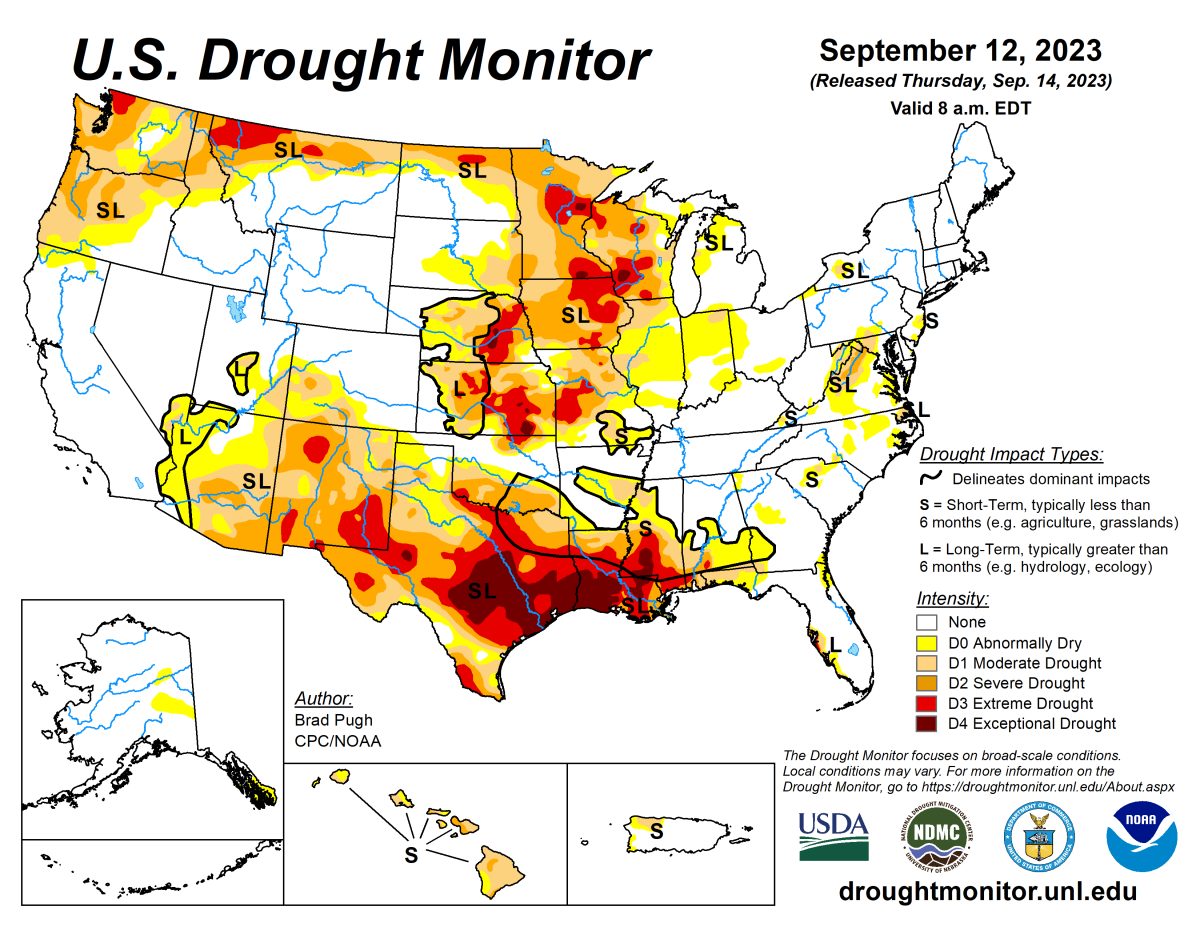
According to the September 12, 2023 U.S. Drought Monitor, moderate to exceptional drought covers 31.1% of the United States including Puerto Rico, an increase from last week’s 30.2%. The worst drought categories (extreme to exceptional drought) increased from 7.5% last week to 8.0%.
The upper-level circulation over the contiguous U.S. during this U.S. Drought Monitor week (September 6–12) consisted of a subtropical ridge of high pressure across the southern states and Pacific weather systems moving in the jet stream flow across the northern states. Ridges dominated two areas—extending northward across the Rocky Mountains and across the East Coast. Upper-level troughs of low pressure that were associated with the Pacific weather systems favored two other areas—the Great Lakes to Ohio Valley and the eastern Pacific just off the West Coast. This atmospheric circulation pattern resulted in warmer-than-normal temperatures over the Southwest to southern Plains, northern Rockies, and Mid-Atlantic to Northeast.
Cooler-than-normal temperatures dominated the week from the northern Plains to the Mid-Mississippi Valley and parts of the Great Basin to California. Cold fronts and surface low-pressure systems that were associated with the Pacific weather systems spread above-normal precipitation across parts of the Plains, Great Lakes, and Southeast to Northeast.
The week was drier than normal across most of the West, southern Plains, and Mississippi and the Ohio Valleys to the Gulf of Mexico Coast. The subtropical ridge extended eastward across the Caribbean and westward into the North Pacific, keeping precipitation below normal over the Hawaiian Islands, Puerto Rico, and the U.S. Virgin Islands. Above-normal rain contracted abnormal dryness and drought or reduced its intensity in the Mid-Atlantic and parts of the Plains and western Great Lakes. But abnormal dryness and drought expanded or increased in intensity in parts of the Mississippi and Ohio Valleys, the Gulf Coast, and Hawaii, and other parts of the Plains.
Nationally, expansion exceeded contraction, so the nationwide moderate to exceptional drought area increased this week. Abnormal dryness and drought are currently affecting over 118 million people across the United States including Puerto Rico—about 38.1% of the population.

The full U.S. Drought Monitor weekly update is available from Drought.gov.
In addition to Drought.gov, you can find further information on the current drought on this week’s Drought Monitor update at the National Drought Mitigation Center.
The most recent U.S. Drought Outlook is available from NOAA’s Climate Prediction Center. The U.S. Department of Agriculture’s World Agriculture Outlook Board also provides information about the drought’s influence on crops and livestock.
For additional drought information, follow #DroughtMonitor on Facebook and Twitter.



